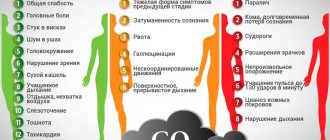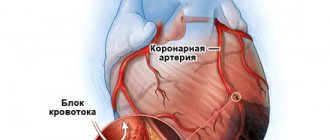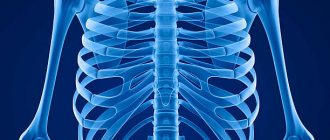Domestic gas poisoning is one of the most common reasons for calling an ambulance. This situation is very dangerous for human health. Failure to provide timely assistance can lead to death. No one is immune from such cases, so it is important to know what to do and how to provide first aid to the injured person.
In the case where the poisoning occurred voluntarily, we are talking about suicide. Then you will need the help of not only a therapist, but also a psychologist. You can help a person in any case if you do it in time.
Symptoms of household gas poisoning
Methane is a household gas that enters people's apartments and houses through gas pipelines. It is colorless and odorless, so poisoning occurs very easily. It is for this reason that other types of gas that have some aroma began to be added to methane. But despite this, household gas poisoning occurs.
Content:
- Causes of poisoning
- Symptoms of household gas poisoning
- Forms of poisoning
- First aid
- Treatment of poisoning
One of the main symptoms of poisoning is headache. Most often it has increasing intensity and is aching in nature. In certain cases, pain occurs in the forehead and temporal area. Most often, a person cannot explain their location. Also, people who have been poisoned by household gas have impaired coordination of movement. This occurs due to severe dizziness, everything in front of a person’s eyes blurs, and limbs weaken.
Confused consciousness is noted. The victim is not able to explain what is happening to him, cannot answer simple questions - for example, voice his name, surname, date of birth.
In addition, nausea and vomiting are observed. These are fairly common signs of any poisoning. In some cases, they can save a person’s life, since in case of incessant vomiting, the victim has to seek help from doctors. There is also pain in the chest area. This symptom may not necessarily be present, but victims of domestic gas poisoning often report the presence of chest pain. In certain cases, others may perceive this as a sign of a heart attack. Only a doctor can definitely make the correct diagnosis.
It is important to understand that often the victims are unconscious, so it is almost impossible to get any explanation from them. In such a situation, you need to pay attention to the skin. When poisoned by household gas, they turn red or blue.
There is a certain group of people in whom the described symptoms are too pronounced. This includes those who have diseases of the respiratory system and heart problems that occur in a chronic form. This also applies to pregnant women, young children and the elderly. In addition, this category includes smokers and people with chronic blood pathologies.
Molecule structure
Firstly, the empirical formula shows that the valency of carbon in the compound is II. Same as with oxygen. Therefore, each of them can form two bonds. The chemical formula of carbon monoxide CO clearly confirms this.
This is what happens. Between the carbon and oxygen atoms, according to the mechanism of sharing unpaired electrons, a double covalent polar bond is formed. Thus, the structural formula of carbon monoxide takes the form C=O.
However, the features of the molecule do not end there. According to the donor-acceptor mechanism, a third, dative or semipolar bond is formed in the molecule. What explains this? Since after the formation of covalent bonds according to the exchange order, oxygen has two pairs of electrons, and the carbon atom has an empty orbital, the latter acts as an acceptor of one of the pairs of the former. In other words, a pair of oxygen electrons is placed in an empty carbon orbital and a bond is formed.
So, carbon is an acceptor, oxygen is a donor. Therefore, the formula of carbon monoxide in chemistry takes the following form: C≡O. This structurization gives the molecule additional chemical stability and inertness in the properties it exhibits under normal conditions.
So, the bonds in the carbon monoxide molecule are:
- two covalent polar ones, formed by an exchange mechanism due to the sharing of unpaired electrons;
- one dative, formed by the donor-acceptor interaction between a pair of electrons and a free orbital;
- There are three bonds in total in the molecule.
Forms of poisoning
In medicine, there is a clear distinction between household gas poisoning:
- light form;
- medium shape;
- severe form.
In a mild form, there is dizziness, weakness in the body, a desire to lie down and sometimes pain in the chest. In this state, a person can independently leave the room and seek help.
The middle form is more dangerous. The condition sharply begins to deteriorate; in addition to the symptoms of a mild form, impaired coordination of movements is added, the pulse quickens, and consciousness becomes confused.
In a severe form of poisoning, a person is unconscious, he may develop symptoms of pulmonary edema, and the heart and brain are affected.
There is also an instant form of household gas poisoning. In this case, after a few breaths, asphyxia occurs and the victim loses consciousness. This is the most dangerous form, as the person dies within a few minutes.
How to recognize "invisibility"?
In case of mild poisoning, the face turns red and there is an irresistible drowsiness. Alas, the decision to take a nap in such a situation can be a fatal mistake!
Moderate carbon monoxide poisoning signals a mortal danger with severe shortness of breath, and the symptoms listed above are aggravated even further.
Acute severe carbon monoxide poisoning is characterized by the appearance of convulsions, suffocation, arrhythmia, pulmonary edema, and mental changes. The victim may be found unconscious.
First aid
Naturally, if a person finds himself in such a situation and is next to the victim, he should immediately call an ambulance, which will carry out all the necessary resuscitation measures. While waiting for doctors, you need to provide first aid correctly. First, the victim should be taken out into fresh air. If this is not possible (the person is heavy), then open all windows, doors and vents, creating a draft in the building. On the street, a person should be placed on his back, with ice or a wet, chilled towel applied to his head. If you don't have these items, you can use whatever you have on hand - for example, some frozen meat.
Next, the person’s body is freed from constricting things: unbutton the shirt, jacket, take off the sweater or T-shirt, loosen the belt on the trousers. If the person is conscious, it is important to keep them hydrated. The ideal option would be regular purified water, but any non-alcoholic drinks will do. It is also important to maintain contact with the victim, preventing him from falling asleep or losing consciousness.
When providing first aid to victims, it is important not to make mistakes so as not to worsen their condition. It is important to remember that in a room filled with household gas you cannot turn on electrical appliances, use matches or a lighter. Such actions may cause an explosion and fire.
When assistance must be provided in the building, it is better to have assistants. The ideal option is 2-3 people. If artificial respiration is required, it should be done exclusively with a damp cloth. It is placed on the victim’s mouth, and inhalation is done through the nose. This is necessary in order to avoid poisoning of rescuers. If a person is unconscious, but the pulse and breathing are within normal limits, you can try to revive him with ammonia. To do this, a piece of cotton wool should be moistened with alcohol.
Conditions for the appearance of fumes in the room
Carbon monoxide can be produced using dozens of chemical reactions, but this requires specific reagents and conditions for their interaction. The risk of gas poisoning in this way is practically zero. The main reasons for the appearance of carbon monoxide in a boiler room or kitchen area remain two factors:
- Poor draft and partial flow of combustion products from the combustion source into the kitchen area;
- Improper operation of boiler, gas and furnace equipment;
- Fires and local fires of plastic, wiring, polymer coatings and materials;
- Waste gases from sewer lines.
The source of carbon monoxide can be secondary combustion of ash, loose soot deposits in chimneys, soot and resin embedded in the brickwork of fireplace mantels and soot extinguishers.
Most often, the source of gas CO is smoldering coals that burn out in the firebox when the valve is closed. Especially a lot of gas is released during the thermal decomposition of firewood in the absence of air; approximately half of the gas cloud is occupied by carbon monoxide. Therefore, any experiments with smoking meat and fish using the haze obtained from smoldering shavings should be carried out only in the open air.
A small amount of carbon monoxide may also appear during cooking. For example, anyone who has encountered the installation of gas heating boilers with a closed firebox in the kitchen knows how carbon monoxide sensors react to fried potatoes or any food cooked in boiling oil.
Warning about the use of cookies on the Info KS website
Under EU law, digital content providers are required to provide users of their sites with information about their policies regarding cookies and other data. The site administration must obtain the consent of EU end users to store and access cookies and other information, as well as to collect, store and use data when using Google products.
A cookie is a file consisting of numbers and letters. It is stored on the device from which you visit the Info KS website. Cookies are necessary to ensure the functionality of sites, increase loading speed, and obtain the necessary analytical information.
The site uses the following cookies:
Necessary for the site to work: navigation, downloading files. There is a difference between a person and a robot.
Cookies to improve performance and collect analytical information. They help the site administration understand the interaction of site visitors and provide information about the pages that were visited. This information helps improve the operation of the site.
Advertising cookies. These files provide information about visits to our pages, data about links and advertising units that interested you. The goal is to display content on the pages that is most targeted to you.
If you do not agree to our use of cookies on your device, please leave the site.
By continuing to browse the Info KS website you consent to the use of cookies.
The most common cause of acute intoxication is gaseous poisoning. The consequences of gas entering the body can be very serious, even fatal, so it is important to provide timely assistance to the injured person. In order to notice the first signs of intoxication, you should know how the gas affects the body and how the consequences of this effect manifest themselves.
Causes
You can become poisoned by household gas by inhaling it. This substance penetrates into the air in different ways:
- Leaky joints of gas pipes in the apartment.
- Poorly closed stove handles.
- Malfunction of gas equipment.
- Intentional organization of leakage for the purpose of suicide or murder.
- Damage to gas hoses and pipes.
Gas leaks are especially dangerous at night. In this case, hypoxia develops during sleep, which goes unnoticed by the person. This often causes death. Moreover, the victims die without regaining consciousness.
Industrial use
In the metallurgical industry, carbon monoxide is often used for the reduction of metals from their oxides or salts. The formula of the resulting compound is CO2. A pure substance, metal, is also formed.
In addition, carbon monoxide is used:
- for processing meat and fish products, which allows you to give them a fresh look;
- for the synthesis of certain organic compounds;
- as a component of generator gas.
Therefore, this substance is not only harmful and dangerous, but also very useful for humans and their economic activities.
Sources
- https://www.gasdetecto.ru/podderzhka/stati/ugarnyj-gaz-vozdejstvie-na-cheloveka-i-pribory-ego-kontroliruyuschie/
- https://istra-gaz.ru/raschety/ugarnyj-gaz-primenenie.html
- https://bouw.ru/article/ugarnyy-gaz
- https://nauka.club/khimiya/oksid-ugleroda.html
- https://FB.ru/article/184533/ugarnyiy-gaz-formula-i-svoystva
- https://kidschemistry.ru/ximicheskie-i-fizicheskie-svojstva-ugarnogo-gaza.html
- https://www.schoolchemistry.ru/katalog/uggaz.htm
- https://www.med24.online/articles/otravlenie_ugarnym_gazom_priznaki_simptomy_pervaya_pomosch/
- https://medicina.dobro-est.com/otravlenie-ugarnyim-gazom-simptomyi-i-pervaya-pomoshh-lechenie.html
What medications to take
To block the effects of intoxication caused by household gas, the doctor prescribes medications that will help quickly remove toxic substances. The treatment complex consists of the following medicinal forms:
- To block the spread of toxic substances throughout the victim’s body, an antidote is administered. Acizol is considered the most effective;
- the next stage is connecting IVs with antihypoxants and medications that normalize the functioning of the heart muscle;
- An Ambu bag helps ensure oxygen supply or intubation is performed;
- if the patient is not breathing, he is urgently sent to the intensive care unit, where resuscitation procedures are carried out aimed at stabilizing the condition.
As soon as the patient’s condition can be stabilized, an examination is performed to determine abnormalities in the functioning of the organs. This allows you to begin the second stage of therapy. This is a treatment complex that provides for the complete elimination of the consequences of gas poisoning and includes the administration of the following drugs:
- to prevent the development of inflammation in the respiratory system, Pulmicort is prescribed;
- Levopod helps block cramps and also reduce muscle tone;
- to eliminate pain and also alleviate the condition of the victim, Novigan is prescribed;
- To strengthen the body's defenses and to destroy the formed carboxyhemoglobin, the drug Carboxylase is indicated.
In addition, the therapy is supplemented with sorbents, with the help of which it is possible to neutralize toxic substances and cleanse the body. Polysorb is considered the most effective medicine for these purposes.
The effect of methane on the body
Methane in a certain ratio with air explodes. And when inhaled it has a toxic effect on the body. Methane damage occurs when its content in the air exceeds 20%. The gas enters the body when inhaled, replaces oxygen and is carried by the blood. As a result, severe oxygen starvation occurs. The central nervous system is affected, breathing is suppressed, and suffocation occurs. Signs of intoxication of the body appear.
It is important to recognize poisoning in time. Otherwise, death will occur.
Prevention
To avoid intoxication with this substance, you need to monitor the condition of gas equipment, maintaining it in working order. If you suspect a leak, you should immediately stop the gas supply and call a specialized team.
Prevention also includes the following actions:
- Ensure normal ventilation in rooms where there is gas equipment.
- If gas appliances do not have an automatic emergency system, do not leave them uncontrolled.
- Do not leave children alone near gas equipment.
- Do not use gas stoves for heating.
- After finishing using gas, close the valves.
- Avoid spilling liquid on gas burners.
The question of whether it is possible to be poisoned by this substance should be answered in the affirmative. Domestic gas intoxication is a very dangerous condition that can lead to negative consequences. To avoid this, you need to strictly adhere to safety precautions.
Consequences
Domestic gas poisoning can lead to the following consequences:
- chronic heart failure,
- deterioration of cognitive abilities,
- respiratory pathologies.
Have you ever suffered from household gas poisoning?
- Yes it was
- No, it was not
- Now there are symptoms of intoxication
ResultsPoll Options are limited because JavaScript is disabled in your browser.
- No, it wasn’t 79%, 243 votes 243 votes 79% 243 votes - 79% of all votes
- Currently there are symptoms of intoxication 14%, 44 votes 44 votes 14% 44 votes - 14% of all votes
- Yes, there were 6%, 19 votes 19 votes 6% 19 votes - 6% of all votes
Total votes: 306 10/03/2017 You or from your IP have already voted.
- Yes it was
- No, it was not
- Now there are symptoms of intoxication
You or from your IP have already voted. results
Characteristics of methane
This gas is odorless and completely transparent. It should be borne in mind that the typical “gas smell” inherent in household gas is usually caused by a special additive - methyl mercaptan gas in a small concentration. However, this odor may not be noticeable to people with a poor sense of smell. When methane burns, a bluish glow is observed. In a certain quantitative ratio with air it becomes explosive.
Methane is relatively low-toxic and lighter than air, so in open space the gas simply rises and does not enter the lungs. However, closed spaces where it can accumulate unhindered for a long time are quite another matter. In order to be poisoned by methane, you need to inhale it at a concentration of approximately 25-30%.
Methane has one unpleasant property - it easily penetrates the blood-brain barrier and directly affects the brain. At the same time, it depresses the respiratory system. Damage to the central nervous system is also noted. This entails the development of oxygen starvation. If appropriate measures are not taken in a timely manner, gas poisoning and, as a consequence, death will occur.










